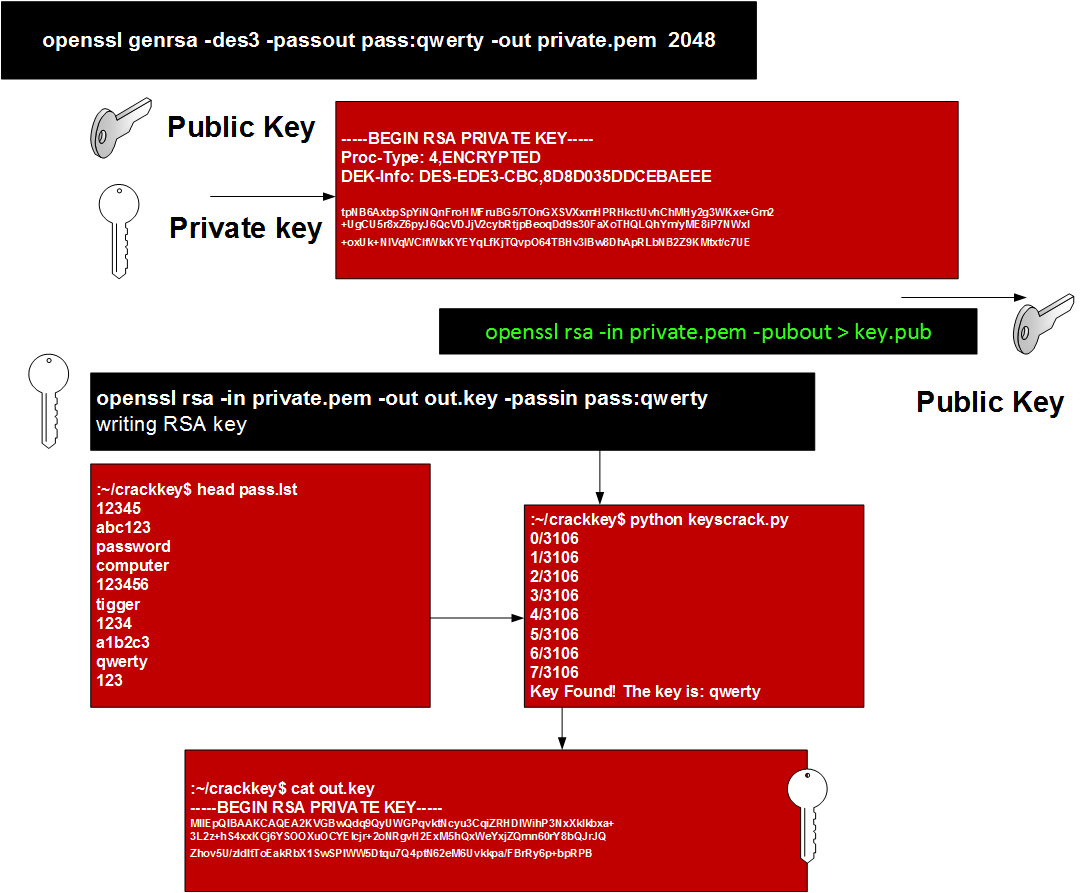- In this example, we are generating a private key using RSA and a key size of 2048 bits. $ openssl genpkey -algorithm RSA -pkeyopt rsakeygenbits:2048 -out private-key.pem To generate a password protected private key, the previous command may be slightly amended as follows.
- Jan 31, 2010 Use your key to create your ‘Certificate Signing Request’ - and leave the passwords blank to create a testing ‘no password’ certificate openssl req -new -key server.key -out server.csr Output.
- Reasons for importing keys include wanting to make a backup of a private key (generated keys are non-exportable, for security reasons), or if the private key is provided by an external source. This document will guide you through using the OpenSSL command line tool to generate a key pair which you can then import into a YubiKey.
Openssl Key Generation Without Password Reset
OpenSSL is a powerful cryptography toolkit that can be used for encryption of files and messages.
If you want to use the same password for both encryption of plaintext and decryption of ciphertext, then you have to use a method that is known as symmetric-key algorithm.
From this article you’ll learn how to encrypt and decrypt files and messages with a password from the Linux command line, using OpenSSL.
Openssl aes-256-cbc -salt -a -d -in encrypted.txt -out plaintext.txt Asymmetric encryption. For Asymmetric encryption you must first generate your private key and extract the public key. Openssl genrsa -aes256 -out private.key 8912 openssl rsa -in private.key -pubout -out public.key To encrypt.
HowTo: Encrypt a File
| Options | Description |
|---|---|
| openssl | OpenSSL command line tool |
| enc | Encoding with Ciphers |
| -aes-256-cbc | The encryption cipher to be used |
| -salt | Adds strength to the encryption |
| -in | Specifies the input file |
| -out | Specifies the output file. |

Interesting fact: 256bit AES is what the United States government uses to encrypt information at the Top Secret level.
Warning: The -salt option should ALWAYS be used if the key is being derived from a password.
Without the -salt option it is possible to perform efficient dictionary attacks on the password and to attack stream cipher encrypted data.

When the salt is being used the first eight bytes of the encrypted data are reserved for the salt: it is generated at random when encrypting a file and read from the encrypted file when it is decrypted.
HowTo: Decrypt a File
| Options | Description |
|---|---|
| -d | Decrypts data |
| -in | Specifies the data to decrypt |
| -out | Specifies the file to put the decrypted data in |
Base64 Encode & Decode
Base64 encoding is a standard method for converting 8-bit binary information into a limited subset of ASCII characters.It is needed for safe transport through e-mail systems, and other systems that are not 8-bit safe.
By default the encrypted file is in a binary format.
If you are going to send it by email, IRC, etc. you have to save encrypted file in Base64-encode.
Cool Tip: Want to keep safe your private data? Create a password protected ZIP file from the Linux command line. Really easy! Read more →
To encrypt file in Base64-encode, you should add -a option:
| Option | Description |
|---|---|
| -a | Tells OpenSSL that the encrypted data is in Base64-ensode |
Option -a should also be added while decryption:
Non Interactive Encrypt & Decrypt
Warning: Since the password is visible, this form should only be used where security is not important.
By default a user is prompted to enter the password.
If you are creating a BASH script, you may want to set the password in non interactive way, using -k option. Magic dvd copier key generator.
Cool Tip: Need to improve security of the Linux system? /fable-3-pc-activation-key-generator.html. Encrypt DNS traffic and get the protection from DNS spoofing! Read more →
Public key cryptography was invented just for such cases.
Encrypt a file using a supplied password:
Openssl Genrsa No Password
Decrypt a file using a supplied password: